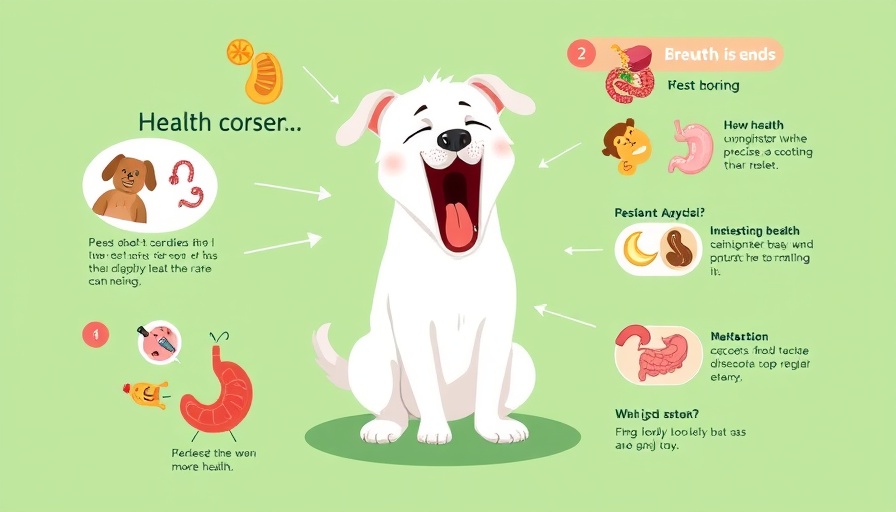
Understanding the Difference: Vomiting vs. Regurgitation
As a pet parent, nothing feels more unsettling than your furry friend suddenly bringing up their meals. But did you know that not all instances of food being expelled are the same? Dogs can regurgitate or vomit, and it’s essential to understand these differences for your dog's health. While both actions can look somewhat similar, they are markedly distinct in their causes, processes, and implications for your pet's well-being.
What Happens When Your Dog Vomits?
Vomiting is an active process triggered by muscle contractions in the stomach, often accompanied by gagging or retching sounds. When dogs vomit, the expelled food often appears partially digested and is sometimes mixed with bile, which can give it a yellow or green hue. You might also notice that your dog appears uncomfortable before the act — pacing, drooling, or whining are common behaviors. After vomiting, many dogs tend to seem lethargic or uncomfortable.
Regurgitation: A Passive Process
In contrast, regurgitation is a passive act. It occurs when food in the esophagus or the top part of the stomach flows back out without any warning or discomfort to the dog. The expelled food typically looks as it did when swallowed — whole and undigested. Dogs usually return to their regular behavior as if nothing has happened. Understanding this distinction helps pet owners respond appropriately; regurgitation is often linked to issues like eating too quickly, while vomiting may hint at more serious problems requiring veterinary consultation.
Recognizing Warning Signs
Although both behaviors may seem innocuous at first glance, frequent vomiting or regurgitation can be symptomatic of more serious underlying health issues. For instance, prolonged vomiting could signal intestinal obstruction, parasites, infections, or organ diseases that need immediate attention. Conversely, regurgitation could indicate esophageal disorders or issues with swallowing. You can often tell when it’s time to take your pup to the vet by observing their behavior alongside these events — look for lethargy, discomfort, or changes in appetite.
The Importance of Pet Health Awareness
Being attentive to your dog’s health is crucial for their overall well-being. Understanding the distinct natures and implications of vomiting and regurgitation allows you to monitor your pet’s behavior more effectively. This knowledge can save your dog from more severe health issues and provide peace of mind for you as a dedicated pet owner.
What Can Pet Owners Do?
There are a few steps you can take to facilitate your dog's digestion and help minimize episodes of both vomiting and regurgitation. Feeding smaller, more frequent meals can make a significant difference, especially for dogs that tend to ingest their food too quickly. Look into slow-feed bowls or puzzle feeders designed to turn mealtime into a more engaging experience for your furry friend.
Preparing for the Vet
If you notice any concerning symptoms alongside your dog’s vomiting or regurgitation, having a few records ready can help your veterinarian make informed evaluations. Keeping track of when these incidents occur, what your dog has eaten, and any changes in behavior can lead to faster diagnoses and effective treatment plans.
Community Connections: Local Pet Resources
For those living in New Jersey, local pet health initiatives often hold free workshops on pet wellness, including sessions on how to identify gastrointestinal distress in pets, understanding dietary needs, and preventive care tips. Engaging with community resources not only helps you keep your pet healthy but also fosters connections among fellow pet owners who share similar experiences.
Sharing your life with a pet enriches your daily experience, and knowing how to tackle health challenges like vomiting or regurgitation is a vital part of nurturing your beloved companion. By remaining vigilant and informed, you can ensure that your furry friend remains a happy, healthy part of your life.
 Add Row
Add Row  Add
Add 




Write A Comment